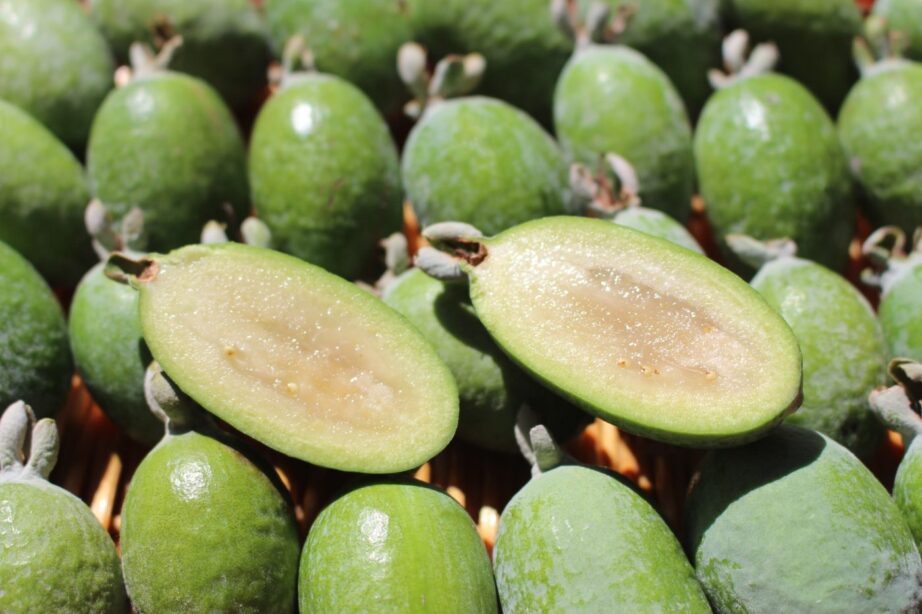Feijoa are my favorite fruit. Luckily for me, the pretty shrubs are prolific, and the harvest can be used in so many ways. Growing feijoa is easy because the plants have few pests and aren’t demanding. Even better, the slow-growing, mid-sized evergreen looks good in landscaping thanks to the pretty flowers.
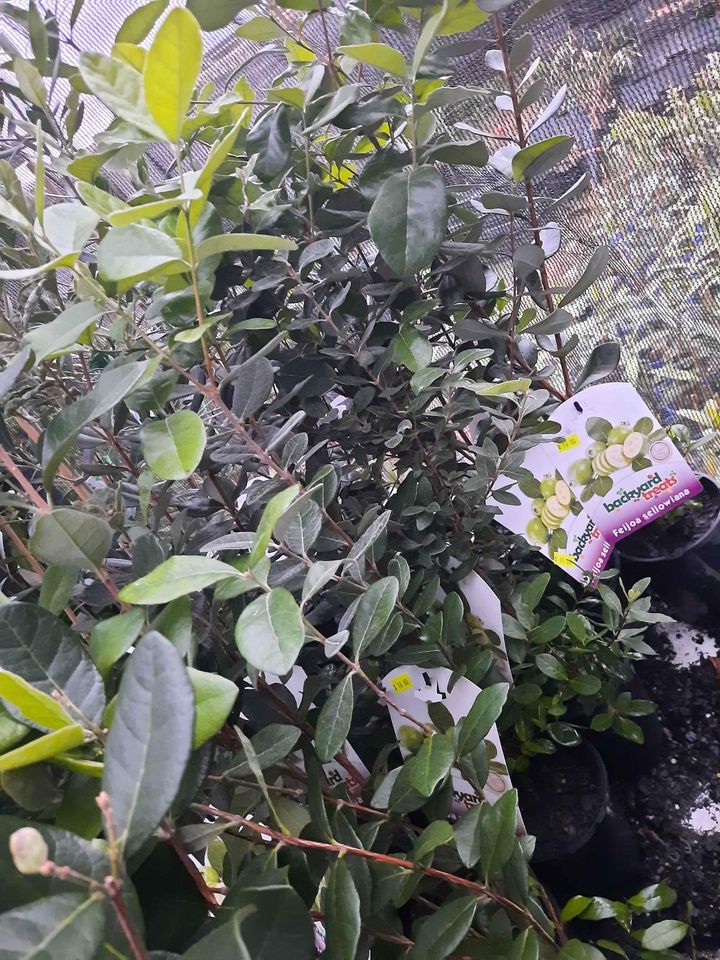
Never heard of feijoa? Now’s your chance to get to know the tasty South American fruit that’s also known as pineapple guava.
I make chutney, pickle, jam, wine, bread, cake, and juice with my harvest. While feijoa is a versatile culinary fruit, nothing beats cutting one in half and scooping out the flesh to eat. Feijoa have a unique flavor all their own that taste like a combination of strawberry, pineapple, guava, and sometimes a little wintergreen.
Feijoa Varieties
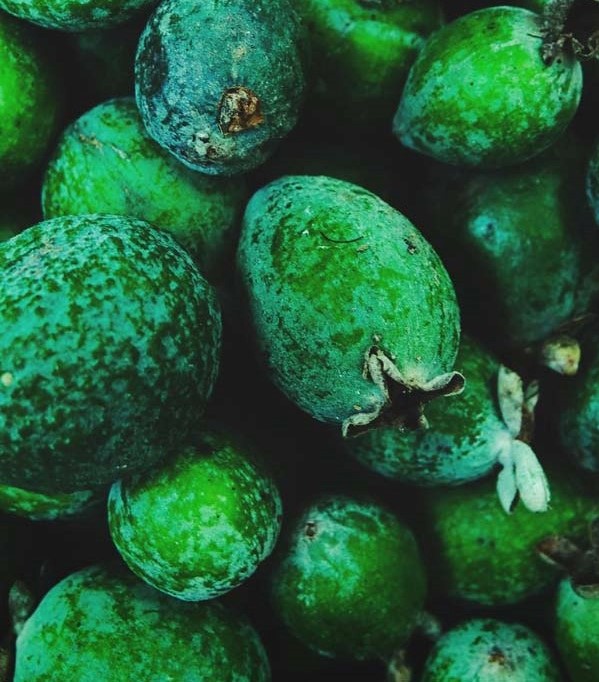
There are a few feijoa varieties out there, but since it’s still a fairly rare fruit ., you may need to look around to find them.
- Apollo – Apollo is my favorite by far. If I could only have one feijoa variety, it would be Apollo. I find this variety to be prolific with good size fruit. Apollo is self-fertile but does better if other varieties are planted nearby. Apollo pollinates Gemini. It’s a mid-to-late season fruiter.
- Gemini – Gemini is pollinated by Apollo, but fruits earlier. Gemini ripens in early fall and is another prolific producer. It has smaller fruit than Apollo.
- Mammoth – This variety, as the name implies, produces large fruits that ripen mid-season. Mammoth is self-fertile but will do better with other feijoa trees nearby.
- Moore – Moore is vigorous and has large fruit.
- Coolidge – Coolidge is a reliable, heavy cropper. It’s completely self-fertile, so if you have room for only one variety, this should be your pick.
- Triumph – This variety has medium-sized fruits with firm skin. Triumph will produce a good yield if it’s pollinated.
Other varieties you should keep an eye out for include: Trask, Pineapple Gem, Nazemetz and Choiceana. There are several others as well.
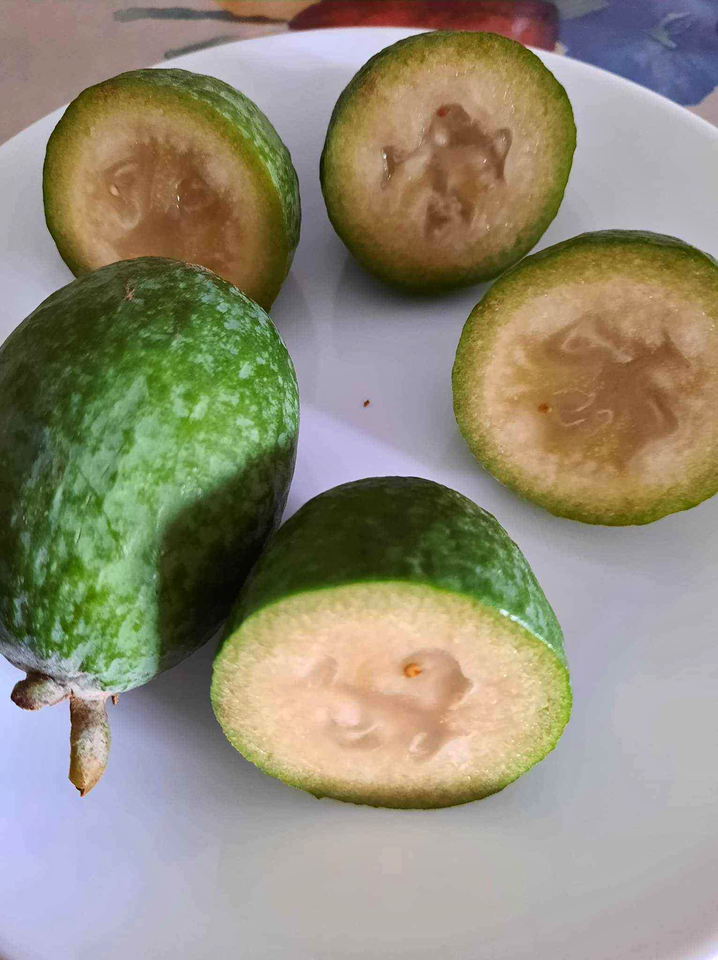
Zones
Feijoa grows in zones 8 to 11 and prefers a temperate to sub-tropical climate. They don’t like high humidity and can withstand winter temperatures as low as 15°F.
I’ve found that to get the most flavorful fruit, feijoa has to be subjected to consistently cold temperatures during the winter. For optimal flowering, plants need about 50 hours of chilling.
Sun and Soil Requirements
Feijoa does well in full sun but will tolerate partial shade. Too much shade will affect both the size and number of fruit. Give plants protection from hot, reflected sun.
Although feijoa will grow in any soil, it thrives in a pH level between 5.5 to 7.0. If the soil is too alkaline, the leaves will turn yellow, and fruit set will be compromised. Feijoa plants need well-drained soil.
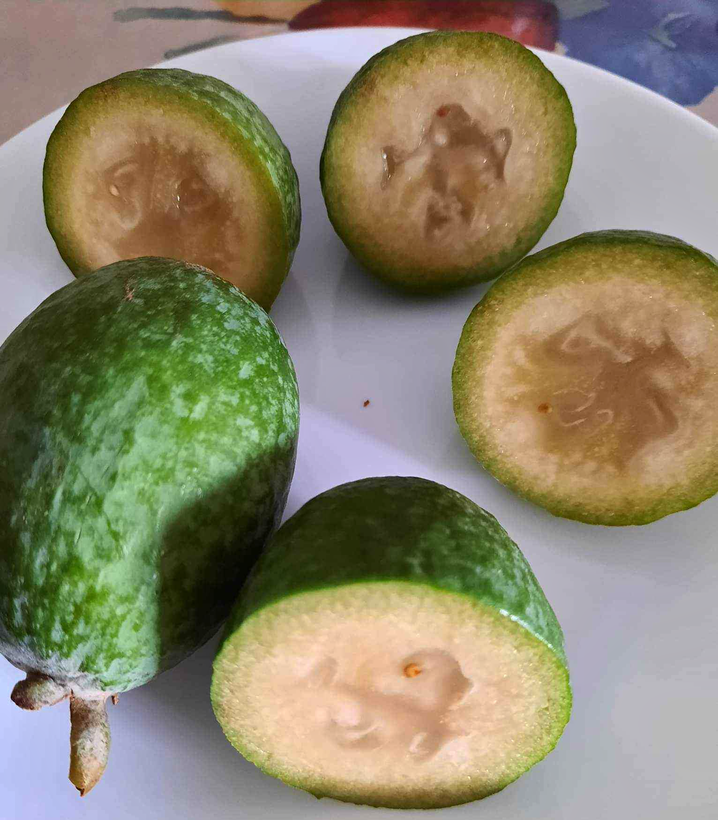
When to Plant
Plant feijoa when temps are cool, and the ground is workable. I don’t plant in the summer when temperatures are high, and the ground is dry. I also avoid planting when it’s too cold, especially when there’s a frost.
Container Planting
Feijoa grow well in pots. The size will be limited, and they will require plenty of water and fertilizer.
Germinating Seeds
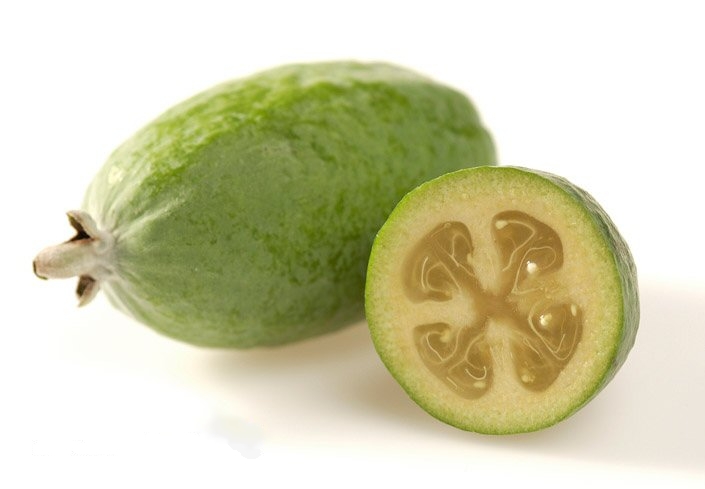
Growing feijoa from a fruit seed is possible, but it’s fiddly, and the seeds may not be to type. The best and quickest way to get your feijoas growing is to buy a transplant from a reputable seller.
If you do want to try growing from seed, you need to squeeze the pulp into a container and cover in water. Leave it for about four days to ferment before rinsing in a sieve to expose the seeds. Pick them out and allow them to dry. You can keep these seeds for up to a year before planting.
Planting Transplants
Planting feijoa is an easy process if you follow a few rules. Dig a hole twice the size of the root ball and around 2 to 3 feet deep.
Place the tree in and backfill with half of the soil you removed and half good quality compost. Compress with your foot gently and add a bit more compost to make the hole level with the ground.
I always stake trees when I first plant them, giving the roots time to embed themselves and get strong.
Spacing
I plant feijoa 10 to 15 feet apart depending on the variety. If you choose one of the big feijoa varieties, plant at 20-foot intervals to ensure proper airflow.
Caring for Feijoa
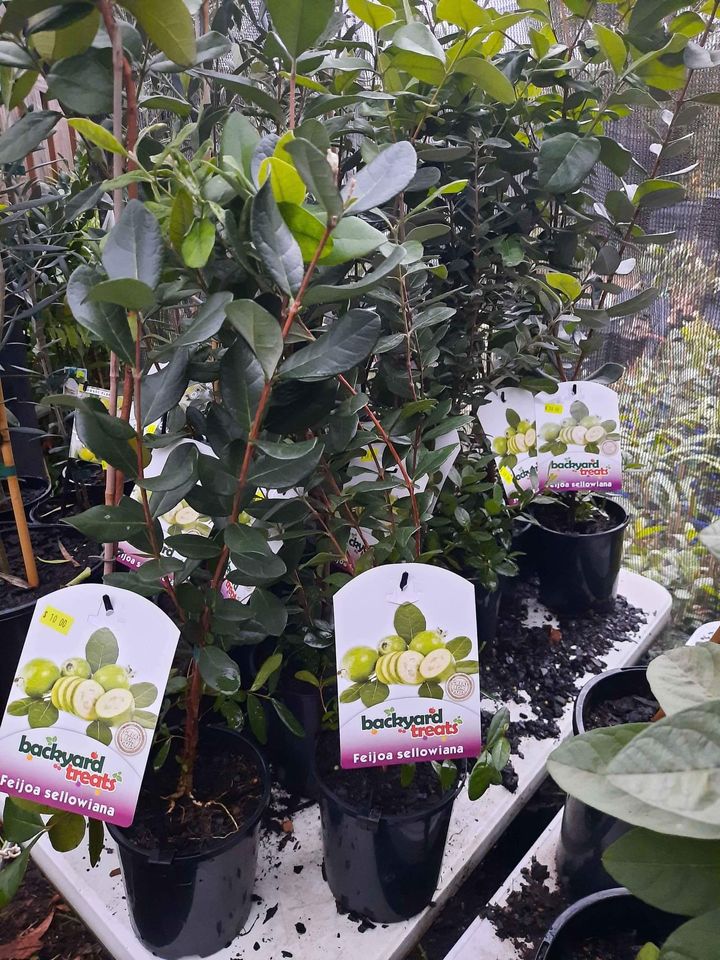
Fertilizer
Feijoa grow slowly, so they don’t require too much feeding. If you choose to feed, use a complete fertilizer every two months. Be sure to fertilize container-grown plants, especially after fruiting.
Watering
For good quality fruit, water deeply and regularly, especially when your tree is flowering and fruiting. Lack of water will cause the fruit to drop prematurely and be bitter and dry. You’ll appreciate the difference in quality if you maintain a good watering regime during this time.
Pruning
Prune plants lightly in the summer after you’ve harvested the fruit to encourage new growth. Feijoa doesn’t require pruning, but if you want, you can grow it as a hedge and keep it trimmed back.
Common Problems and Solutions for Growing Feijoa
Feijoa has a few pests, but it is remarkably hardy and unbothered by most bugs and diseases.
Scale
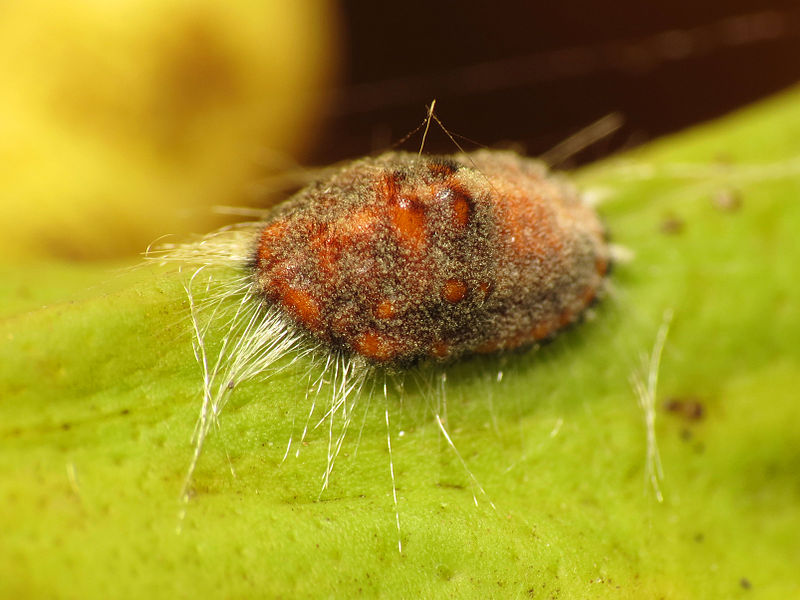
Scale suck the sap out of your plants. If your feijoa starts to die back or have stunted growth, look for scale. The best way to rid your plant of scale is to use a pyrethrum spray with an oil base.
Fruit Flies
The other pest that bothers growing feijoa is fruit flies. The females lay eggs below the skin of the fruit and when the maggots hatch, they nibble the fruit, causing it to die. Pheromone traps will help you determine if you have the pest. If you do, use a neem oil spray and keep the area around your trees clean.
Guava Moth
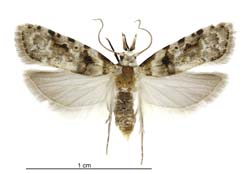
Guava moths are incredibly destructive. They’re primarily found in New Zealand and Australia, so gardeners in the U.S. don’t have to worry about getting this pest. If you happen to live where the guava moth thrives, keep an eye out. The adult moth makes a little pinprick in the fruit where it lays its egg. After a while, a fully formed caterpillar chews its way out.
If you’re unfortunate enough to have guava moth, there are traps you can buy to place around your trees to attract the adult moth before they lay their eggs. You can also place netting over your trees to protect them.
Feijoa are generally pest free after about three years of growth. Monitor regularly until then.
How to Harvest, Store and Use Feijoa
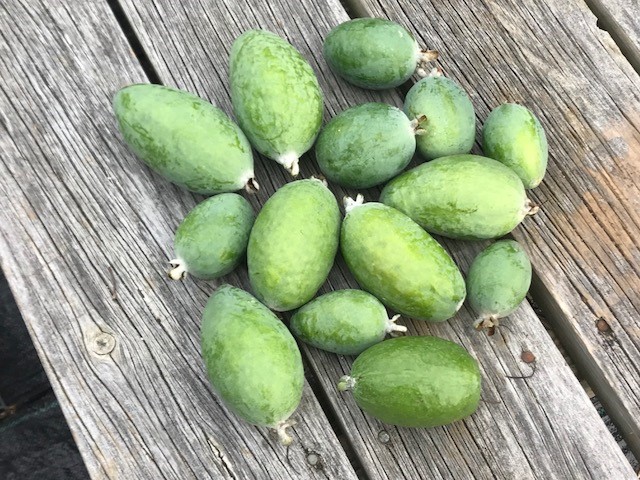
Don’t pick feijoa off the tree because the unripe fruit is hard and bitter. The best thing to do is to wait for them to drop and pick them off the ground.
If like me, you are too impatient, you can ‘soft pick.’ Gently hold the feijoa and twist gently. If it pops off, it was ready to drop soon. If you tug the fruit and it doesn’t break off, it’s nowhere near ready.
The fruit will continue to ripen on the counter, so eat it quickly. You can store fruits in the refrigerator for a few days.
Apart from eating feijoa straight from the tree, you can make pickles, chutney, cakes, wine, bread, and loads more recipes.
If you have been thinking about growing feijoa, you really can’t go wrong. If you plant a tree and do nothing, you will still get fruit, they are that easy to grow.
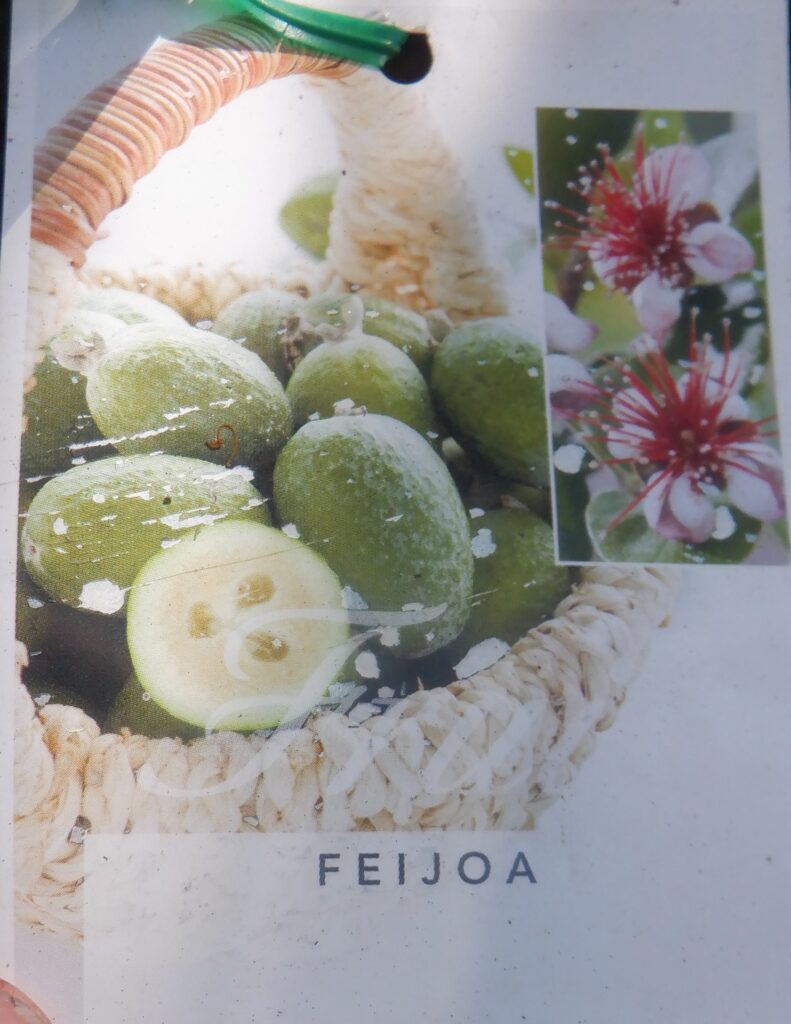
Any questions or if buying, contact me HERE
At time of posting this info, I have 5 of these fruit trees around 2 metres tall in 45 litre grow bags. I am not aware of which type of Feijoa I have, my grower tell me they are self fertile. The label says Acca sellowiana. Syn. Feijoa sellowiana
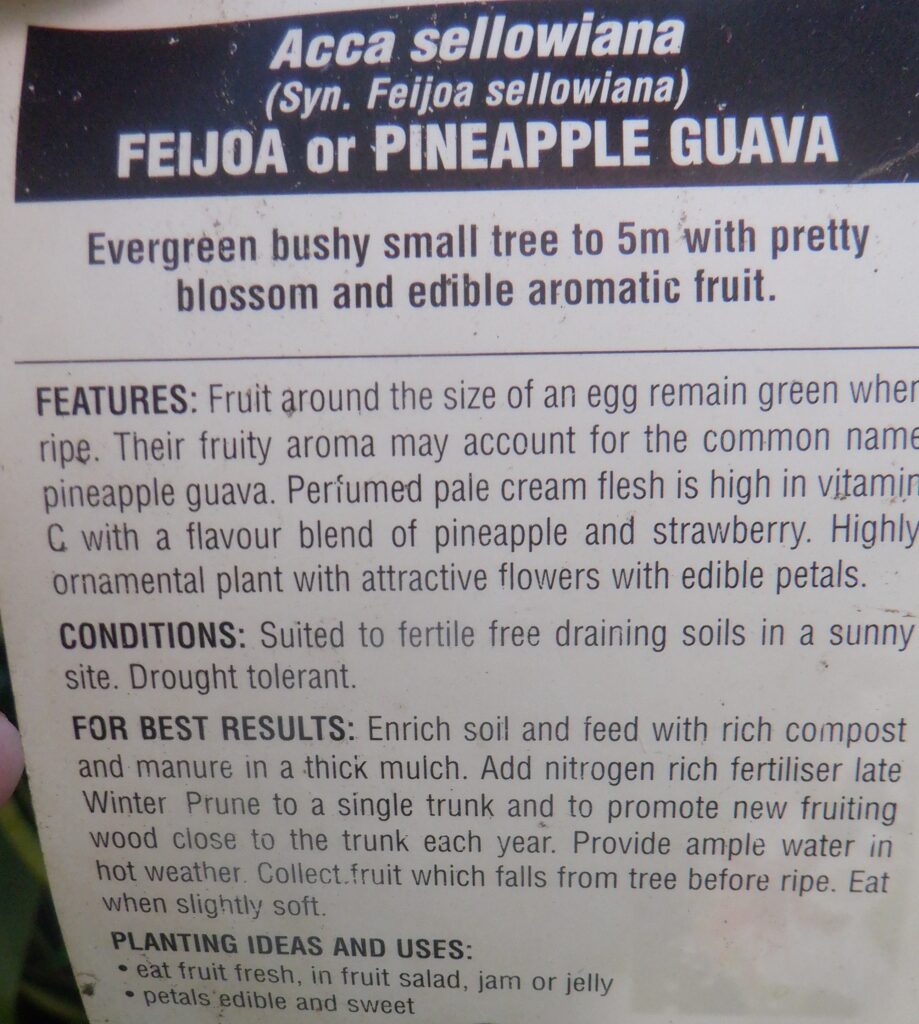
Evergreen bushy small tree to 5metres with pretty blossoms & edible aromatic fruit
Stock levels changes over time




